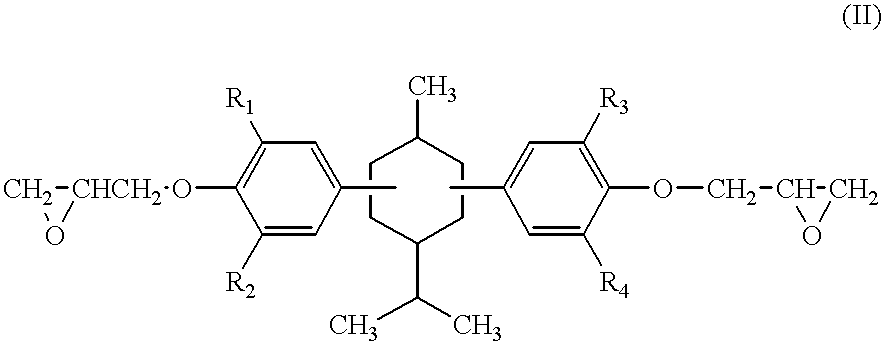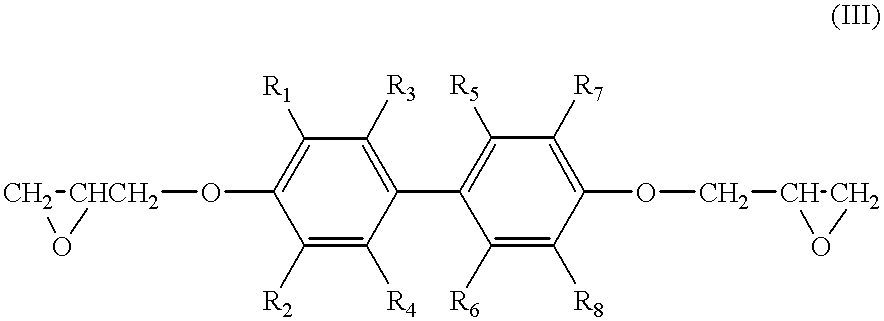Adhesive sheet for semiconductor connecting substrate, adhesive-backed tape for TAB, adhesive-backed tape for wire bonding connection, semiconductor connecting substrate, and semiconductor device
a technology for connecting substrates and adhesives, applied in the direction of heat-activated film/foil adhesives, film/foil adhesives, transportation and packaging, etc., can solve the problems of high adhesive strength not allowing peeling, especially difficult to achieve a balance between adhesive strength and adhesive strength, and the inability to achieve total satisfactory properties
- Summary
- Abstract
- Description
- Claims
- Application Information
AI Technical Summary
Benefits of technology
Problems solved by technology
Method used
Image
Examples
example 2
[0183] Spherical silica ("Ecserica" produced by Tokuyama Corp.) was mixed with toluene, and the mixture was treated by a sand mill, to prepare a dispersion. NBR-C (PNR-1H produced by Japan Synthetic Rubber Co., Ltd.), SEBS-C (Mx-073 produced by Asahi Chemical Industry Co., Ltd.), naphthalene skeleton-containing epoxy resin ("Epiclon" HP4032 produced by Danippon Ink & Chemicals, Inc., 150 in epoxy equivalent), 4,4'-diaminodiphenylsulfone, and methyl ethyl ketone equal in weight to the dispersion were added to the dispersion to achieve the composition ratio shown in Table 1, and the mixture was stirred at 30.degree. C. to prepare an adhesive solution. The adhesive solution was used to obtain a pure copper sheet with an adhesive layer as described in Example 1. The properties are shown in Table 3.
examples 3 to 6
[0184] Adhesives prepared by using the raw materials shown in Table 1 at the composition ratios shown in Table 2 as described in Example 1 were used to obtain adhesive sheets for semiconduction connecting substrates. The properties are also shown in Table 3.
example 7
[0190] The polyamide resin (2.5 in amine value) obtained in Reference Example 1, epoxy resin ("Epiclon" HP4032 produced by Dainippon Ink & Chemicals, Inc., 150 in epoxy equivalent), nonylphenol type resol phenol resin (CRM0803 produced by Showa High polymer Co., Ltd.), straight type phenol resol resin (PR50087 produced by Sumitomo Durez Co., Ltd.), p-t-Bu / bisphenol A mixed type (p-t-Bu / bisphenol A=8 / 2) phenol resol resin (CKM935 produced by Showa High polymer Co., Ltd.) and DBU were mixed to achieve the composition ratio shown in Table 2, and the mixture was stirred in a mixed solvent of methanol and monochlorobenzene at 30.degree. C., to achieve a concentration of 20 wt. %, for preparing an adhesive solution. The adhesive was applied by a bar coater, to a 25 .mu. thick polyethylene terephthalate film ("Lumirror" produced by Toray Industries, Inc.) used as a protective film, to achieve a dry thickness of about 12 .mu., and the laminate was dried at 100.degree. C. for 1 minute and at...
PUM
| Property | Measurement | Unit |
|---|---|---|
| temperature | aaaaa | aaaaa |
| storage elastic modulus | aaaaa | aaaaa |
| RH | aaaaa | aaaaa |
Abstract
Description
Claims
Application Information
 Login to View More
Login to View More - R&D
- Intellectual Property
- Life Sciences
- Materials
- Tech Scout
- Unparalleled Data Quality
- Higher Quality Content
- 60% Fewer Hallucinations
Browse by: Latest US Patents, China's latest patents, Technical Efficacy Thesaurus, Application Domain, Technology Topic, Popular Technical Reports.
© 2025 PatSnap. All rights reserved.Legal|Privacy policy|Modern Slavery Act Transparency Statement|Sitemap|About US| Contact US: help@patsnap.com



